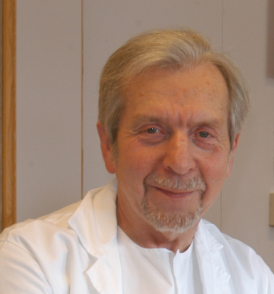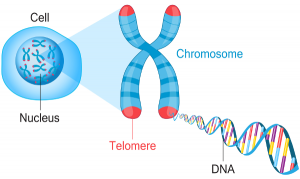Selenium supplements may be beneficial as an adjuvant treatment for patients with mitochondrial disorders. This is especially true in many parts of Europe and the Middle East where the soil and the foodstuffs have poor selenium content [Stoffaneller & Morse 2015]. Specifically, individuals with mitochondrial dysfunction need the antioxidant and anti-inflammation effects of selenium-dependent selenoproteins [Alehagen 2021; Opstad 2022].

Mitochondrial dysfunction can be defined as the diminished capacity of the mitochondria in the cells to convert sugars into energy, i.e., the diminished capacity of the cells to generate ATP energy [Miwa 2022].
Mitochondrial dysfunction is closely associated with biological aging and with cell senescence (the cessation of cell division) [Miwa 2022].
Mitochondrial dysfunction is also associated with increased resting energy expenditure, a state termed hypermetabolism [Sturm 2023].
Mitochondrial dysfunction is associated with telomere attrition, the shortening of the protective caps on the ends of the chromosomes. Eventually, telomere attrition is so severe that cell division is no longer possible [Sturm 2023].
Hypermetabolism and the Need for Optimal Selenium Status
Hypermetabolism is the adaptation that occurs in cells with impaired mitochondrial functioning. To improve their short-term survival chances, the cells respond by expending more and more energy, even at rest. However, the resulting hypermetabolism increases considerably the rate of the cells’ aging. The cells are, in essence, expending more energy than they are able to generate because of the mitochondrial dysfunction [Sturm 2023].

It is an almost Faustian bargain that the cells with dysfunctional mitochondria are forced into. Yes, the hypermetabolism keeps the cells going in the short term. At the same time, the increased resting energy expenditure – the hypermetabolism – activates stress responses and inflammation and degrades the cells’ telomeres [Sturm 2023].
Biological aging and premature death are inevitable in such cases. What is happening is that the cells are using up resources for short-term survival that would otherwise be available for processes that enhance long-term survival, e.g., maintaining telomeres [Sturm 2023].
Selenium Status and Telomere Attrition
Let’s review the evidence.
Swedish study
In the KiSel-10 Study, Professor Urban Alehagen and a team of researchers administered an active treatment of 200 mcg of selenium and 200 mg of Coenzyme Q10 or matching placebos to elderly community living Swedish citizens, average age 78 years, who had low selenium status at baseline – 67.1 mcg/L [Alehagen 2018]. In a sub-analysis, the researchers compared leukocyte telomere length at baseline and again after 42 months [Opstad 2022].
They found significantly less shortening of the leukocyte telomere length in the active treatment group compared with placebo group. Moreover, they discovered that study participants suffering future death had significantly shorter telomeres at 42 months than did the survivors. The sub-analysis showed that less telomere shortening in the active treatment group was associated with reduced risk of cardiovascular mortality and with improved survival [Opstad 2022].
In earlier sub-studies, the Swedish researchers had shown that the daily combination of selenium and CoQ10 supplements for four years had the following significant effects [Alehagen 2022]:
- improved heart function
- reduced inflammation and oxidative stress
- improved endothelial function
- reduced fibrosis
US studies
Researchers measured leukocyte telomere length of 3194 United States adults older than 45 years old and compared the telomere length data to the study participants’ dietary selenium intakes. After they had adjusted for potential confounding variables, the researchers found that every 20 mcg increase in dietary selenium intake was associated with 0.42% longer telomere length. Sub-group analyses revealed that dietary selenium intake was significantly related to longer telomere length in females and non-obese participants but did not reach statistical significance in males and obese participants [Shu 2020].
In an investigation of 878 study participants with diabetes, researchers observed that there was a linear relationship between dietary selenium intake and telomere length in female patients with diabetes. Less telomere attrition was associated with higher selenium intake within the range of zero to 250 mcg/day [Gong 2022].
Chinese study
In a study of 746 mother-newborn pairs in Wuhan Children’s Hospital, researchers found evidence that maternal selenium levels positively affect fetal telomere length. This is important because newborn telomere length is an effective predictor of lifespan and health outcomes in later life [Wang 2022].
Myanmar study
A study of 408 mother-infant pairs indicated that selenium intake and status has a protective effect against the telomere shortening induced by exposure to heavy metals such as lead and cadmium [Wai 2020].
Conclusion: Optimal Selenium Status for Telomere Preservation
- Biological aging is an inevitable process. It is characterized by mitochondrial dysfunction, an imbalance between harmful free radicals and protective antioxidants, chronic systemic inflammation, telomere attrition, and cellular senescence [Alehagen 2021].
- Selenium through the activity of antioxidant seleno-enzymes reduces oxidative stress and inflammation, protects against telomere shortening, and decreases DNA damage [Alehagen 2021].
- Optimal selenium intakes are intakes that maintain the serum selenium status around 125 mcg/L [Winther 2020].
Sources
Alehagen U, Aaseth J, Alexander J, Johansson P. Still reduced cardiovascular mortality 12 years after supplementation with selenium and coenzyme Q10 for four years: A validation of previous 10-year follow-up results of a prospective randomized controlled trial. PLoS One. 2018;13:e0193120.
Alehagen U, Opstad TB, Alexander J, Larsson A, Aaseth J. Impact of Selenium on Biomarkers and Clinical Aspects Related to Ageing. A Review. Biomolecules. 2021 Oct 7;11(10):1478.
Alehagen U, Johansson P, Svensson E, Aaseth J, Alexander J. Improved cardiovascular health by supplementation with selenium and coenzyme Q10: applying structural equation modelling (SEM) to clinical outcomes and biomarkers to explore underlying mechanisms in a prospective randomized double-blind placebo-controlled intervention project in Sweden. Eur J Nutr. 2022 Sep;61(6):3135-3148.
Gong H, Yu Q, Guo D, Wang Y, Duan L, Huang W, Zhou J, Wang J, Huang P. The relationship between dietary selenium intake and telomere length among diabetes. Br J Nutr. 2022 Jun 10:1-7.
Miwa S, Kashyap S, Chini E, von Zglinicki T. Mitochondrial dysfunction in cell senescence and aging. J Clin Invest. 2022 Jul 1;132(13):e158447.
Opstad TB, Alexander J, Aaseth JO, Larsson A, Seljeflot I, Alehagen U. Selenium and Coenzyme q10 intervention prevents telomere attrition, with association to reduced cardiovascular mortality-sub-study of a randomized clinical trial. Nutrients. 2022 Aug 15;14(16):3346.Stoffaneller R, Morse NL. A review of dietary selenium intake and selenium status in Europe and the Middle East. Nutrients. 2015 Feb 27;7(3):1494-537.
Shu Y, Wu M, Yang S, Wang Y, Li H. Association of dietary selenium intake with telomere length in middle-aged and older adults. Clin Nutr. 2020 Oct;39(10):3086-3091.
Sturm G, Karan KR, Monzel AS, Santhanam B, Taivassalo T, Bris C, Ware SA, Cross M, Towheed A, Higgins-Chen A, McManus MJ, Cardenas A, Lin J, Epel ES, Rahman S, Vissing J, Grassi B, Levine M, Horvath S, Haller RG, Lenaers G, Wallace DC, St-Onge MP, Tavazoie S, Procaccio V, Kaufman BA, Seifert EL, Hirano M, Picard M. OxPhos defects cause hypermetabolism and reduce lifespan in cells and in patients with mitochondrial diseases. Commun Biol. 2023 Jan 12;6(1):22.
Wai KM, Umezaki M, Umemura M, Mar O, Watanabe C. Protective role of selenium in the shortening of telomere length in newborns induced by in utero heavy metal exposure. Environ Res. 2020 Apr;183:109202.
Wang L, Song L, Liu B, Zhang L, Wu M, Liu Y, Bi J, Yang S, Cao Z, Xia W, Li Y, Tian Y, Zhang B, Xu S, Zhou A, Wang Y. Association between maternal urinary selenium during pregnancy and newborn telomere length: results from a birth cohort study. Eur J Clin Nutr. 2022 May;76(5):716-721.
Winther KH, Rayman MP, Bonnema SJ, Hegedüs L. Selenium in thyroid disorders – essential knowledge for clinicians. Nat Rev Endocrinol. 2020 Mar;16(3):165-176.
The information presented in this review article is not intended as medical advice and should not be used as such.
31 January 2023
